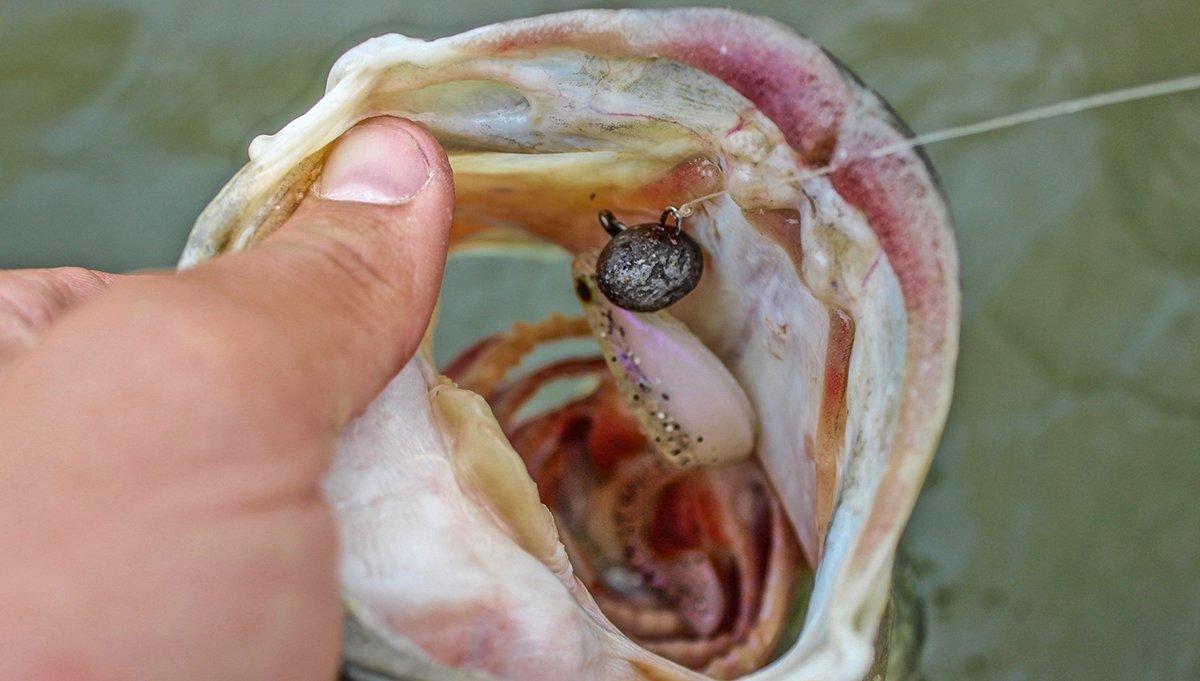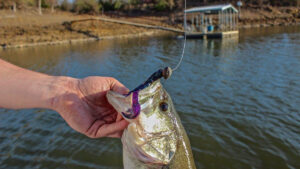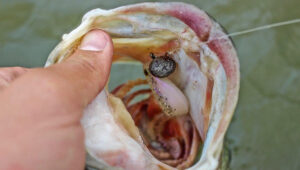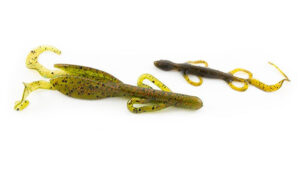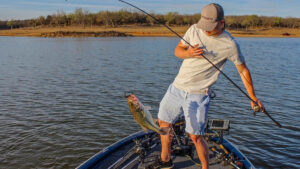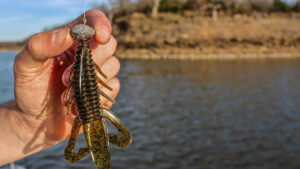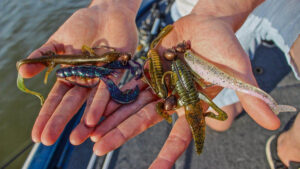As water temperatures grow warmer, the list of productive bass lures also grows. Lately I’ve been having a lot of success tossing both a Gene Larew Biffle Hardhead and a Strike King Jointed Structure Head. It has been an excellent bite, so I wanted to make sure I let everyone in on it.
I’ve spent a lot of time experimenting with different plastics and have found a few shapes that, in my opinion, you should definitely try this year.
Big craws
Anytime I fish a swinging jighead, I am fishing it on the bottom, bumping rocks and trying to cause a reaction strike from any bass laying with their bellies on the floor of the lake. It comes as no surprise to find crawfish-imitating soft plastics to be among the most successful when paired with a swinging jighead.
Crawfish are a major food source for bass and they spend 99 percent of their existence at the bottom of a fishery.
Because of the amount of water their claws displace, a Strike King Rage Tail Lobster or a Rage Tail Craw have become my go-to craws for this presentation. The Rage Tail Lobster has a larger 4 1/2-inch body, which holds a 4/0 hook extremely well and both sizes have enough action to get the attention of any nearby bass.
Swimbaits
Paddletail swimabits catch bass whether they are fished on jigheads, an umbrella rig, underspins or even as a trailer. After the last few weeks I can now add a swinging jighead to that list.
I’ve been using a V&M Hightail Shad Swimbait on a 7/16-ounce Hardhead lately in areas I see a lot of baitfish on my electronics. Instead of fishing the swimmer in the middle of the water column for suspended bass, I bump the bottom with the Hardhead swimbait combo, digging up dirt and banging into rocks.
This commotion makes the swimbait look like an injured baitfish struggling to swim. The heavy Hardhead allows you to throw this in slightly dirtier water than you’d normally want to fish a swimbait, but you’ll still want relatively clear water for this setup. If the bass in the area are feeding heavily on baitfish you will want to make sure you take several packages of swimbaits with you.
Lizard lookalikes
When bass move shallow and have spawning on their minds, matching a Zoom Lizard or Zoom Brush Hog with a lighter 3/16 to 5/16-ounce Hardhead can be a deadly combination. Maybe it’s because bass are genetically wired to hate salamanders or maybe pregnant females just hate lizards—whatever the case, bass love to eat lizard-imitating soft plastics when they move shallow to spawn.
By employing a slow reel or drag with a light Hardhead and lizard combo I feel I’m covering more water and fishing more efficiently than with a traditional Texas-rigged lizard.
Creature baits
If the water has more than a few feet of clarity, a V&M J-Bug is hard to beat on the back of swinging jighead. The J-Bug has four appendages that have an action similar to a twin-tail grub, while its body has the larger appearance of a creature bait. This gives the bass a bulky profile to key on while also having an unobtrusive action.
When I’m targeting skiddish, clear-water bass, I’ve found this to be an excellent choice.
“The Bug”
It would be unfair to go without mentioning the Gene Larew Biffle Bug. There is a reason Elite Series pro Tommy Biffle has won a pile of money fishing the Biffle Bug-Hardhead system throughout the entire country: It flat-out catches ‘em.
For me, this bait seems to shine in early prespawn scenarios, when the water hasn’t warmed up enough to put bass in a good mood. With sizes ranging from 3 1/2 to 5 inches long and a plethora of color options, there are options to match almost any forage type.
Swinging jigheads aren’t a magic presentation by any means, but slowly bumping these soft plastics—or other lures with similar profiles—along the bottom will help you catch a few more bass throughout the year. Add this technique to your other staples and you’ll have a hard time throwing anything else. That has certainly been the case for me lately.


